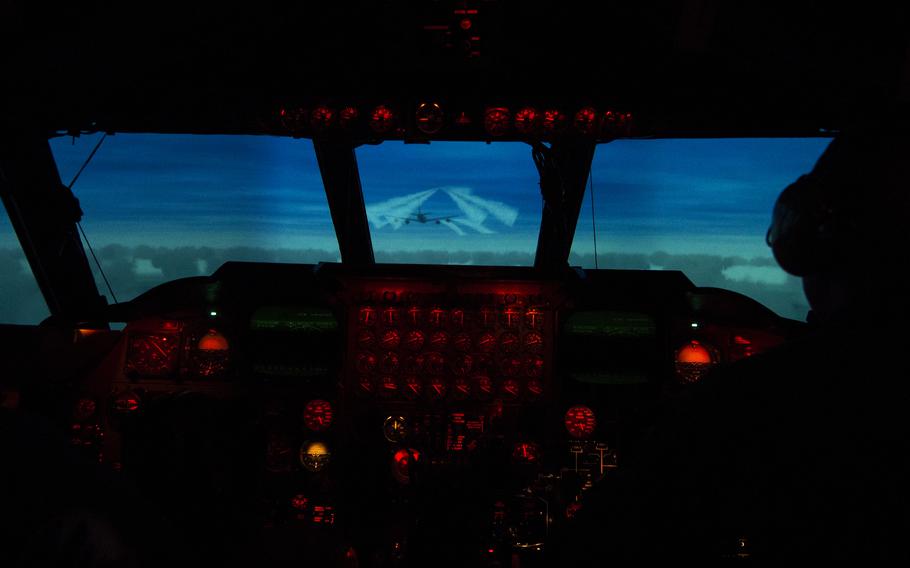
A 69th Bomb Squadron pilot and co-pilot operate a B-52H Stratofortress weapons system trainer during a simulated flight at Minot Air Force Base, N.D., in 2017. A recent Rand Corp. report says the Air Force needs more simulators so crews can rehearse combat scenarios that aren't easily replicated in the air. (Alyssa Akers/U.S. Air Force)
The Air Force should invest more in sophisticated flight simulators to better ensure that pilots can handle combat missions not easily rehearsed in the air, according to a new study commissioned by the service.
The Air Force is struggling with an unmet need for simulators for several aircraft, including the B-52, B-2 and B-1 bombers, the Rand Corp. research group said in a report released this month.
One factor holding the service back is a budgetary preference for planes that comes at the expense of simulators. That could be detrimental for developing combat-ready pilots, the report said.
“The (combat) outcomes that we want to predict are not available in live-fly (training,)” an unidentified senior Air Force official told Rand.
And without sufficient investments in simulator training, “it doesn’t matter if you have engines or not, because you will fail at the mission,” another senior Air Force official added.
Rand’s study came at the behest of the Air Force, which is grappling with ways to better assess whether personnel and units are getting the training they need for real-world missions.
Air Force leadership is increasingly concerned that the current “readiness assessment system” is not providing sufficient insight into the capability of the force, the report said.
The service relies on outdated metrics, which focus too much on specific individual missions rather than a more holistic approach that accounts for the ability of disparate military units to fight together, the report found.
As the Air Force revamps training, expanding the use of simulators and synthetic training environments would better assess the ability of troops to carry out a wide range of missions, Rand said.
Investments directed toward simulators have lagged because it is generally perceived to be easier to secure funding for aircraft, Air Force officials told Rand .
“The relative scarcity of opportunities to train against such threats and the lack of tools to capture performance data mean that commanders must make subjective, incomplete assessments of the capability of their units in the most important operational scenarios,” Rand said.